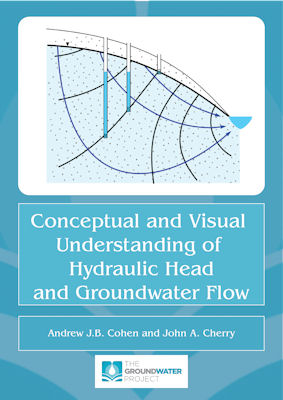Groundwater science is complex, and many types of information are needed for comprehensive understanding. However, the most important information is hydraulic head, which is simply the elevation of the water surface in a well relative to a specified elevation datum such as sea level. When head is combined with basic geologic properties such as hydraulic conductivity, much can be inferred about the groundwater flow direction, and this is a starting point for investigating all types of groundwater situations.
This book is presented in a “learning module” format in that the fundamentals of Darcy’s law, hydraulic head, hydraulic gradient, and potentiometric contours are presented in a conceptual and visual manner that transforms intuition into knowledge using minimal mathematics.

Emphasis is on steady, saturated flow to show how head distribution and gradients within the saturated zone of the subsurface are influenced by variability of hydraulic conductivity and the boundaries of the flow domain. Simple diagrams are used, each representing a visualized puzzle so that after studying the sequence of puzzles and the interspersed exercises of the same form, the student has the foundation needed to visualize groundwater flow patterns and interpret measurements of water level elevation in wells of groundwater systems in the field.

